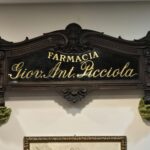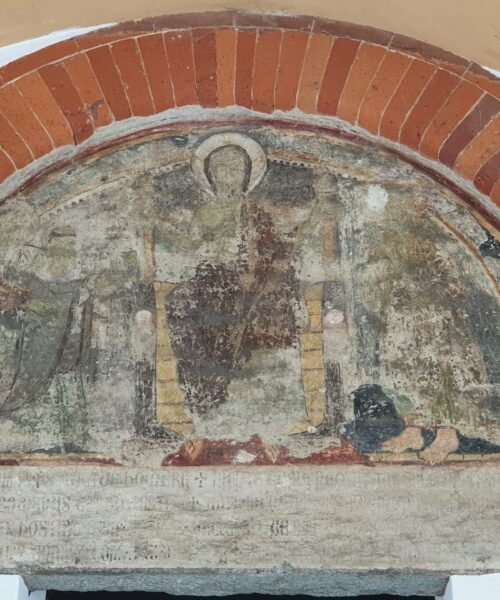Visiting the exhibition “The Singing Wood,” running until January 8, 2024, at ARCA in the Church of San Marco in Vercelli, a celebratory event dedicated to Master Angelo Gilardino, one can admire, among various 19th-century works, an extraordinary canvas by Giacomo Grosso. This piece stands out not only for its impressive size but also for its unusual and deeply human depiction of a classic theme, offering a fresh perspective on sanctity through intimacy and everyday life.
Giacomo Grosso, born in Cambiano on May 23, 1860, and deceased in Turin on January 14, 1938, was an artist who masterfully embodied the spirit of Italian realism. Educated at the Accademia Albertina of Fine Arts in Turin, his academic technique and stylistic conservatism opened the doors to success among the aristocracy and upper middle class, leading to numerous awards and recognitions. Grosso exhibited throughout Europe, frequented Paris, and traveled as far as Buenos Aires for a significant artistic assignment. He was also a painting professor at his alma mater from 1889, influencing a generation of artists, including Augusto Ferrari and Cesare Saccaggi.
In his career, Grosso was sometimes at the center of controversy, as with his work “Supremo convegno,” which drew criticism from the Patriarch of Venice but defense from literary figures like Antonio Fogazzaro. His ironic approach to painting, defining himself as “just a painter” in contrast to colleagues who distanced themselves from academic tradition, underscores his artistic humility. Despite criticisms, he was appointed a senator of the Kingdom of Italy in 1929, recognizing the importance of his art and cultural impact.
This biographical context helps us appreciate the depth and significance of the “Holy Family,” exhibited at the first edition of the Quadriennale di Torino in 1902 and then at the Salon in Paris in 1903, where it received a gold medal. The painting’s sheer size (253×395 cm) is a statement of its importance and the recognition it received. The “Holy Family” is not just a work of considerable physical size; it is also a symbol of Grosso’s contribution to the Italian artistic and cultural landscape.
In the canvas “Holy Family,” Giacomo Grosso captures the essence of sanctity lived with everyday simplicity. The composition depicts Saint Joseph, the carpenter, in a moment of respite from his work: hands still, tools at rest, and his gaze filled with deep affection and unspoken respect for his adoptive son. The latter, the young Jesus, stands as a central figure, his youth not diminishing the depth of his message and the gestures with which he conveys it. He is surrounded by wood shavings symbolizing his humble origins and connection to manual labor.
Mary, the mother, is an image of grace and contemplation; wrapped in her mantle, she observes Jesus with eyes that are windows to unconditional love and a foreboding of sorrow, as if through the canvas she could see the fate that awaits her son. Her figure is both powerful and reserved, a silent but fundamental pillar of this family scene.
The presence of other figures, the listeners positioned at the threshold of the workshop, adds a communal dimension to the work. They are portrayed in period clothing, lending authenticity to the scene and highlighting the humanity of the miraculous event. Their attention is captured by Jesus’ words, and in them is reflected the variety of human responses to the divine: wonder, skepticism, devotion, and curiosity.
Grosso uses light to emphasize the sacred in the everyday: the brightness illuminating Jesus, in contrast to the more subdued surroundings, creates an almost theatrical atmosphere, where the main subjects are highlighted as in a scene from an ancient play. The choice to place the Holy Family in a workshop rather than in a traditionally sacred setting underscores the idea of the divine infused in everyday life, accessible and close to ordinary people. With this work, Grosso appeals to art’s ability to elevate the ordinary to the extraordinary, inviting the viewer to seek the sacred in their own daily life.












